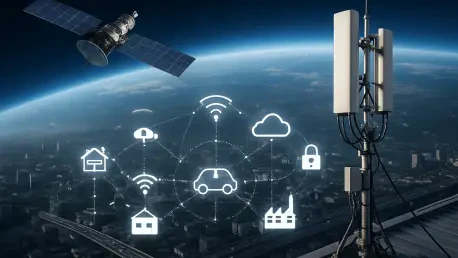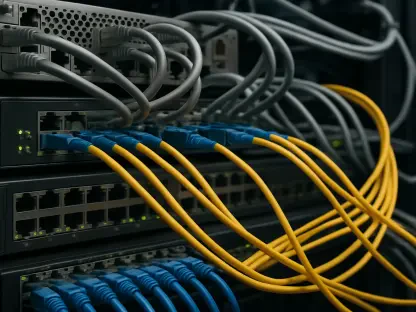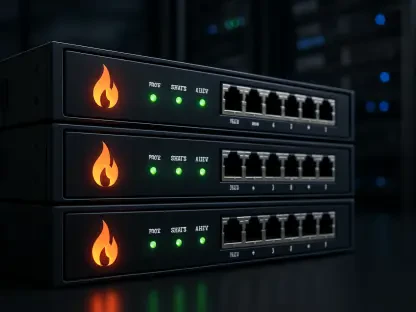In an era where connectivity is the backbone of technological advancement, imagine a world where even the most remote corners of the planet are linked through seamless communication networks, thanks to innovative solutions from companies like Sateliot. A Barcelona-based startup, Sateliot, is turning this vision into reality with a groundbreaking achievement in satellite technology. By successfully establishing a narrowband connection from a low Earth orbit (LEO) satellite to a commercial Internet of Things (IoT) device, the company has set a new benchmark in global connectivity. This milestone, adhering to the stringent 5G standards under 3GPP Release 17 for non-terrestrial networks (NTN), marks a pivotal moment for industries reliant on remote data collection. From agriculture to logistics, the potential to monitor and manage assets in isolated regions is now within reach, promising to reshape how businesses operate on a global scale. Sateliot’s innovation is not just a technical feat but a stepping stone toward bridging the digital divide in underserved areas.
Breaking New Ground in Satellite Connectivity
Pioneering 5G Standards for IoT Devices
Sateliot’s recent demonstration of connecting a LEO satellite directly to a commercial IoT device without hardware modifications is a landmark in satellite communications. The device, a low-power cellular module known as the nRF9151, typically used in sensors for tracking and monitoring, was linked via one of Sateliot’s four operational satellites. This test, conducted in collaboration with a Danish software provider, showcased the power of adhering to global 5G protocols under 3GPP Release 17. Unlike proprietary systems that limit compatibility, Sateliot’s commitment to open standards ensures seamless integration with existing mobile network infrastructures. This approach paves the way for a unified connectivity framework, allowing IoT devices to operate efficiently across both terrestrial and space-based networks. The implications are vast, particularly for sectors that depend on real-time data from remote locations, where traditional cellular coverage often falls short.
A Collaborative Journey to Innovation
The road to this achievement has been paved with years of dedication and collaboration. Sateliot’s team, led by Chief Technology Officer Marco Guadalupi, has not only focused on developing cutting-edge satellite technology but also played an active role in shaping 5G standards through participation in industry working groups. This dual effort underscores the company’s vision of interoperability, setting it apart from competitors who rely on closed systems for connectivity. By prioritizing global roaming and standardized protocols, Sateliot aims to create a cohesive network that integrates satellite and terrestrial infrastructure. This strategic focus is poised to benefit industries such as environmental management, where consistent data from far-flung areas can drive informed decision-making. The successful end-to-end message transmission during the test is a testament to the meticulous planning and partnerships that have defined Sateliot’s approach to revolutionizing connectivity.
Scaling Up for a Connected Future
Ambitious Expansion of Satellite Infrastructure
To meet the growing demand for global IoT connectivity, Sateliot is embarking on an ambitious plan to expand its satellite constellation. With five additional satellites scheduled for launch in October 2026 and another 16 planned for 2027, the company is laying the groundwork for comprehensive worldwide coverage. While specific details of these deployments remain under wraps, further announcements are anticipated in the coming months. The long-term vision includes deploying hundreds of satellites to ensure no corner of the globe is left disconnected. This expansion is critical for supporting the company’s goal of connecting remote IoT devices, with early adopters set to receive the nRF9151 modules in the near future. Such scalability is essential for industries like logistics, where real-time tracking in isolated regions can significantly enhance operational efficiency and reduce costs.
Financial Backing and Market Momentum
Supporting this rapid growth is a robust financial foundation, highlighted by a recently completed 70 million euro Series B funding round. Contributions from state-backed entities focused on strategic technologies underscore the importance of Sateliot’s mission to transform global communication. Additionally, the company has secured recurring contracts worth 250 million euros with over 450 customers spanning more than 50 countries. Targeting an annual revenue of 1 billion euros by 2030, Sateliot is positioning itself as a leader in the satellite IoT market. This financial and commercial momentum reflects strong market confidence in the potential of standardized satellite connectivity to address the needs of underserved regions. As industries increasingly rely on remote monitoring for data-driven decisions, Sateliot’s ability to scale operations while maintaining interoperability will be a key driver of its success in the evolving tech landscape.









